From Dumbarton Rd. Looking North, Undated:
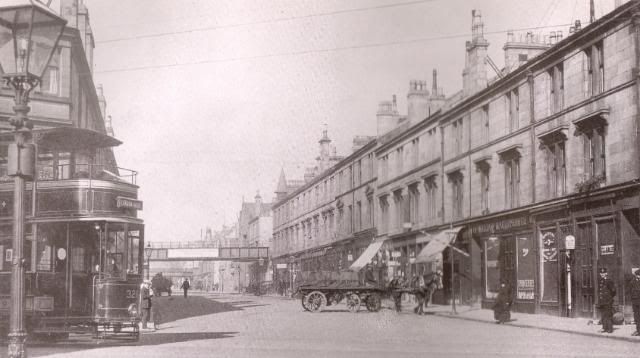
1913:
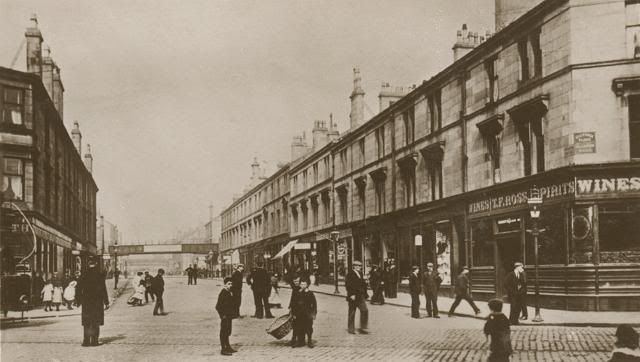
Circa 1943:
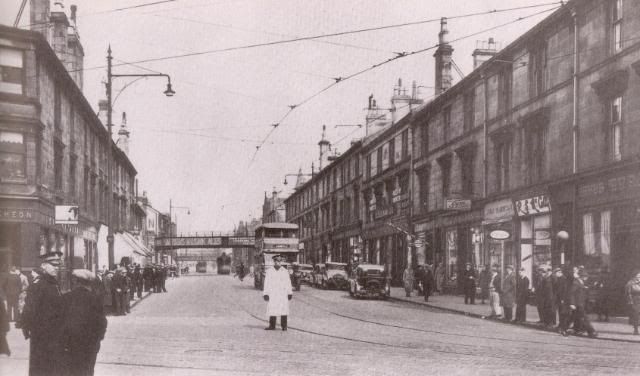
June 2008:

Canal Bridge (undated):
(I was saved from drowning at this spot by two old ladies sometime around 1959, eight lives left.)

June 2006:
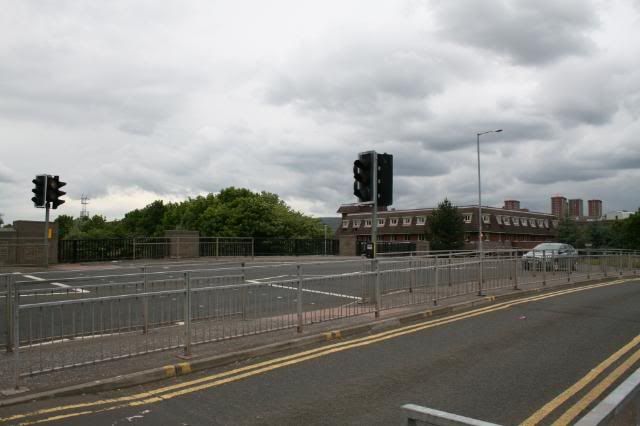
Kilbowie Rd. (just past the canal bridge, looking North, undated)
Postcard view of Kilbowie Road showing, in the middle distance (right of centre), one of the two turrets of the old Palace Theatre on the corner of Graham Street.
The theatre building began life in 1905 as a restaurant, when H McGregor opened dining rooms and a "first-class commercial restaurant" in Graham Street. The dining hall, which could accommodate up to 1,000 patrons for wedding receptions, soirees and conversaziones and other events, was said at the time to be the largest and most up-to-date dining hall in Scotland.
A few years after opening, the building was converted for use as an American Roller Skating Rink. There was another change of use in 1913, when it became a variety theatre called Cinem Varieties. The popularity of the theatre can perhaps be illustrated in the following ditty: Clydebank has a little hall, Cinem is its name. Every week do thousands call, For such is now its fame.
In December 1915 the theatre was renamed the Palace. It subsequently became the Palace Cinema, which was badly damaged in the Clydebank Blitz and never re-opened.
Just south of the Picture House there was a café where we ‘Mods’ would gather, all smart blazers, stay press trousers & silk cravats. At that time there was a bloody rivalry between the Clydebank ‘Bundy‘ & the ‘Derry’ from Drumchapel, nothing to do with us of course, we were a peaceful lot. One evening as some of us were standing outside having a smoke & a laugh, a bus pulled up opposite the café and a dozen or so ‘Derry’ boys poured off it and came sprinting in our direction screaming bloody murder, being much younger than our assailants we scattered in all directions. I headed for the road with two eejits hot on my heels. I turned right and flew uphill towards home. In hindsight not the best decision I‘ve ever made. Just where you can see the tram there was a giant moron swinging a large knife with the obvious intention of removing my head from my shoulders. I ran straight at him, feinted left then right and got passed him, the blade missing my napper by inches. I never knew I could run so fast, fortunately I was built for speed. They kept up the chase for a while & eventually gave up as the distance between us increased. Seven lives left.
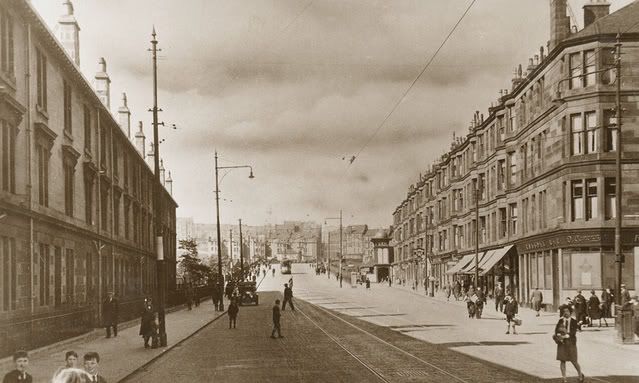
June 2008:

Middle of Kilbowie Rd. Looking North. 1930's
(The Billiard Hall to the right was used as an Air Raid Shelter during the Blitz of March 1941. I spent many a Saturday morning down there in the late ‘60s)
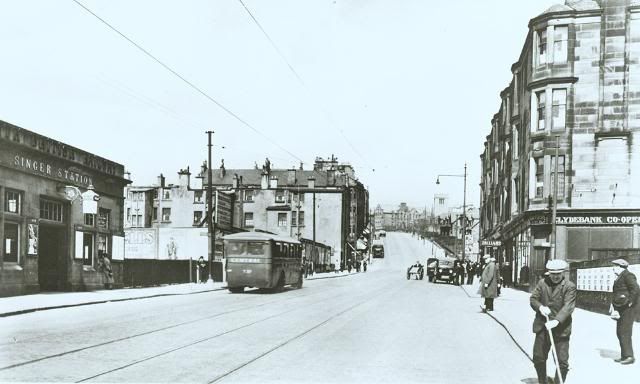
June 2008:

Middle of Kilbowie Rd. Looking North. 1930's:
The Bannerman Place tenements to the right contained the New Kinema picture house and the popular Singer Cafe. The former, known locally as the "Kinch" or the "Bug House", opened in 1914. The main entrance was on Kilbowie Road, although there was also access from Bannerman Street. In the 1930s, the New Kinema was upgraded in the 1930s to enable "talkies" to be shown there, but it had fallen into diuse by the late 1940s.
The Singer Cafe was owned by the Tedeschi family, which also owned the Regal Cafe at the foot of Kilbowie Road.
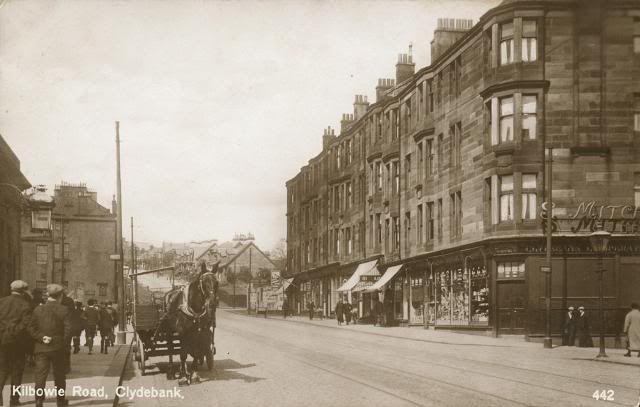
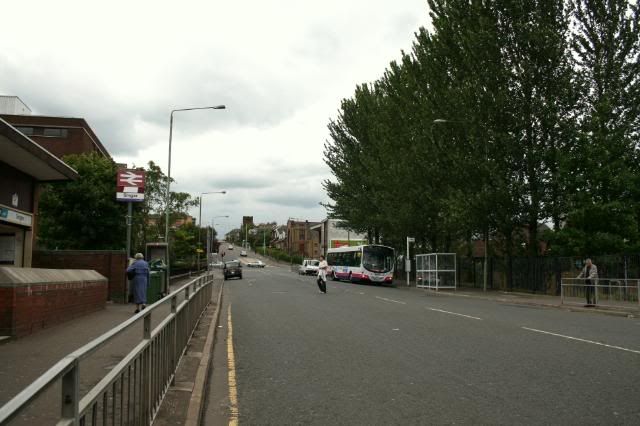
Singer's Station & Factory from Kilbowie Rd. (undated)

June 2008:

Singer Factory/Business Park
Isaac Singer, an American of East European extraction,
built his first sewing machine in 1850. It was patented in 1851
and was immediatelya success. Factories were set up in America
and in 1856, to satisfy the market in Europe, a factory was
established in Glasgow.
The Glasgow factory couldn’t keep up with the demand
so Singer decided to set up in Clydebank. Building started in
1882 with Robert McAlpine and Co. as the builder and was
completed in 1885.
The famous Singer clock, which was 190 feet high was installed
the following year. The clock face was later increased in diameter
to 26 feet making it the biggest in Britain and the second biggest
in the world.
By 1900 the factory was making 13,000 sewing machines a week.
t its peak in 1913 Singer employed 14,000 people.
After the Second World War, Singer steadily declined as the
competition increased and it eventually closed in 1980.
The famous Singer clock was demolished in 1963 during a
modernisation programme.
With the closure of Singer and the decline of shipbuilding,
Clydebank witnessed high unemployment. In 1980 a Task Force
was set up by the Scottish Development Agency to look at
regeneration. In August 1981, Clydebank was declared Scotland’s
first Enterprise Zone. The SDA bought the Singer site and set up Clydebank Business Park.
Radio Clyde was one of the first businesses to locate there.
Top of Kilbowie Rd. Looking North. Circa 1912:
Prior to the Clydebank Blitz in 1941, the Kilbowie Hill area was considered to be a shopper's paradise, boasting around 100 shops including sixteen grocers, fifteen confectioners, eleven dairies, ten newsagents, two posts offices and a bank. The red sandstone tenements on the left were an impressive sight, once stretching in an almost unbroken line to the top of the Hill. Sadly, with the exception of one incomplete tenement at the corner of Kilbowie Hill and Radnor Street, these tenements were totally destroyed during the Blitz.
On the right are some of the small cottages (including the Kilmeny Cottages) that were built on Kilbowie Road from the late 1890s.
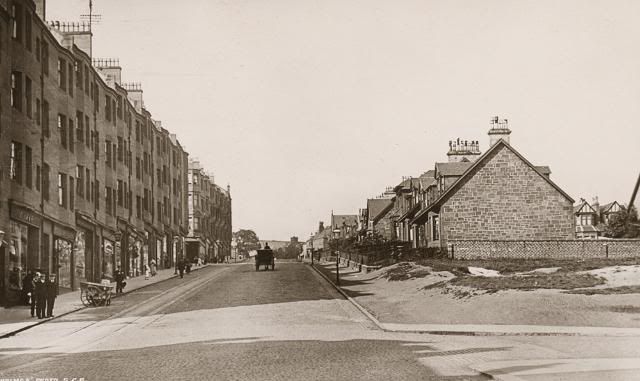
June 2008:
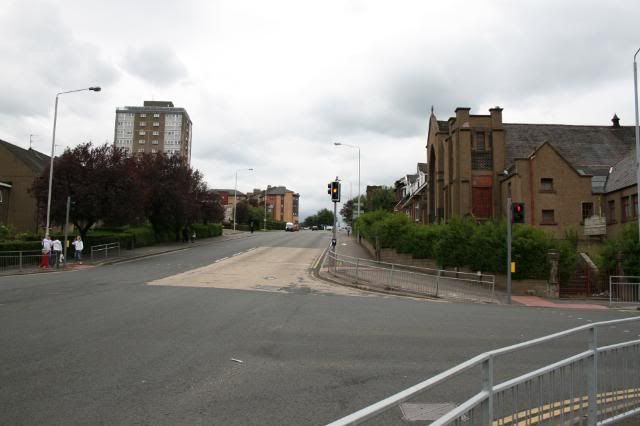
Top of Kilbowie Rd. Looking South (undated)
The tall red sandstone tenements on the right of picture stretched from Radnor Street to Second Avenue. All except for a rump at the entrance to Radnor Street (right foreground) were destroyed in the Clydebank Blitz in March 1941.
As a schoolboy, I stood near this spot to watch the Queen pass by on her way to launch the QE2.

June 2008:



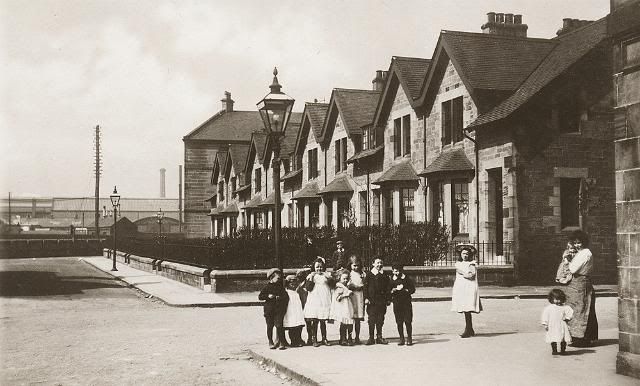

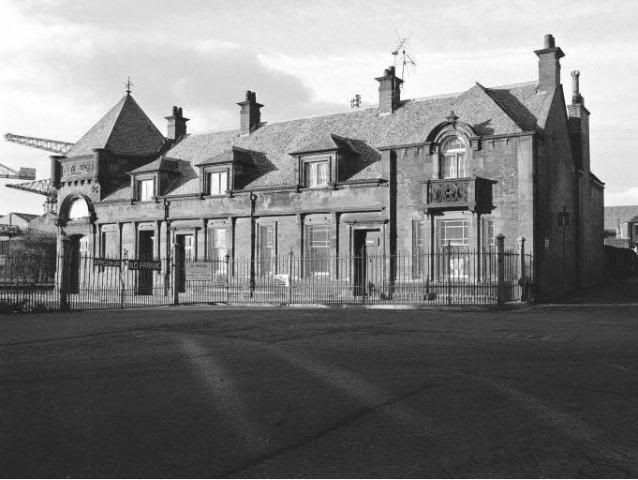

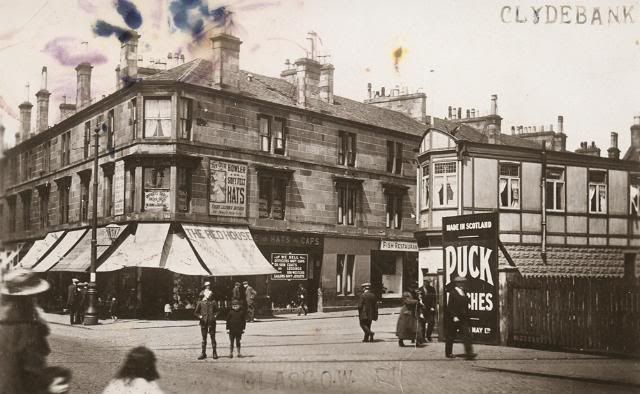


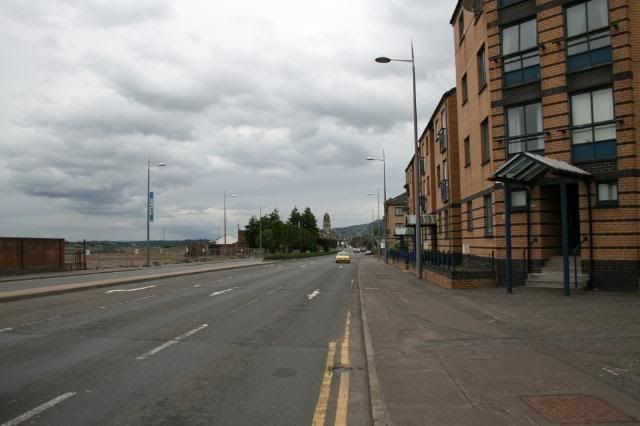
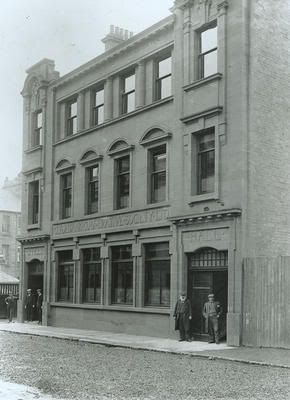
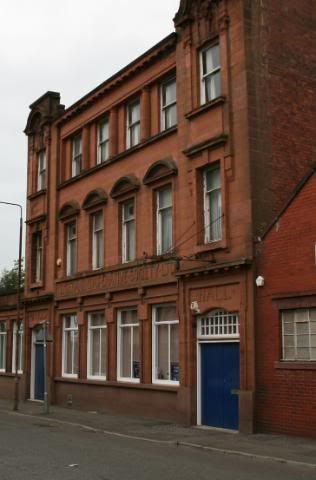
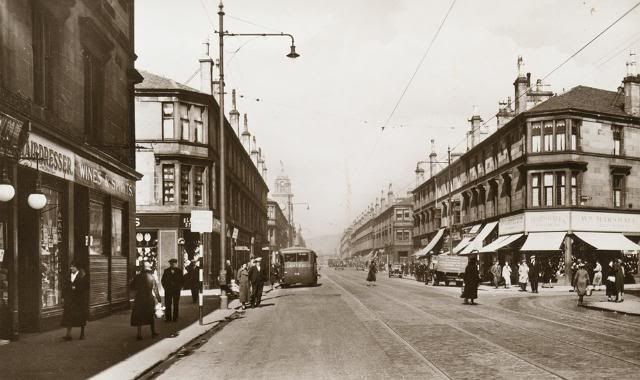

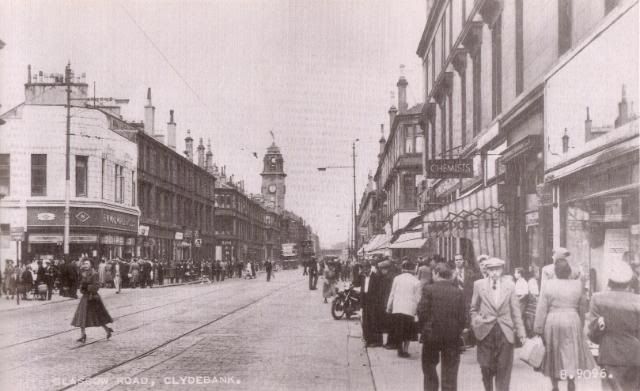


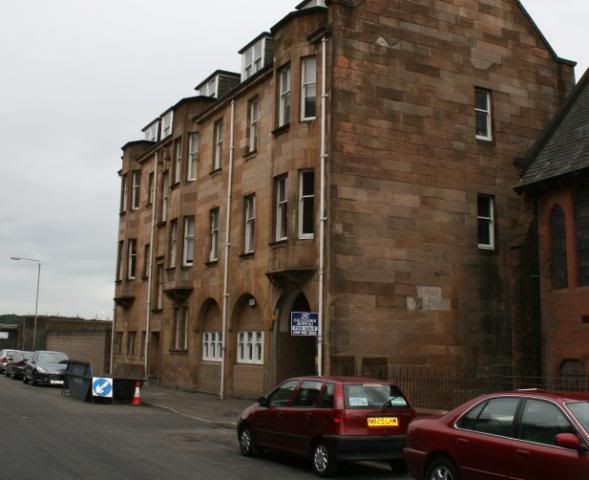




 [/quote]
[/quote]
